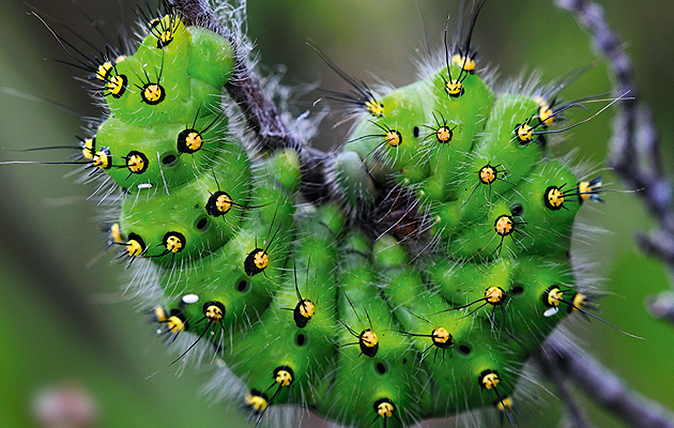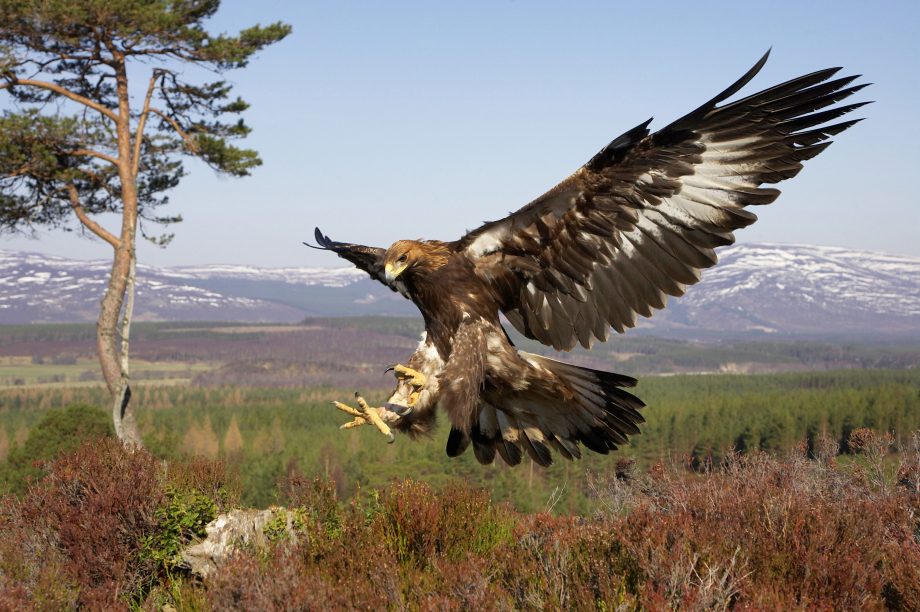Beautiful, delicate and harmful to no-one, our iconic butterflies are facing an increasingly perilous existence – that's the conclusion reached by John Wright after dissecting the myriad statistical evidence.
Butterflies are the ambassadors of the insect world. Harmless, iconically beautiful and gently flitting from flower to flower, they’re the only insect we’re pleased to find alighting on our hand. Britain has only about 56 species, but we love them all.
Their ambassadorial duties consist of more than public relations, however, as they’re true representatives of their fellow insects. Conspicuous and loved as they are, butterflies are recorded with more enthusiasm than any other group of organisms and, if we know things are going well with butterflies, then all is likely to be well with their fellows.
Yet those efforts have produced a messy and complicated statistical picture – as as is the rule rather than the exception in all things biological. We’ve picked out 12 of the most beautiful, and taken a look at the state of the population in Britain right now.
Peacock

Sir David Attenborough’s favourite and an entrancing sight when alighting in clouds of red on a buddleia bush.
Meadow brown

An old friend. Dull yet reliable, I still love to see it.
Small pearl-bordered fritillary

Distinguished from its slightly-larger cousin the Marsh fritillary by black chevrons around its ‘pearls’, this violet-loving butterfly is nearing extinction in England.
Clouded yellow

A true migrant, it sometimes arrives in huge numbers in a ‘clouded-yellow year’. I still remember 1983, when its striking mustard-coloured wings could be seen everywhere. Bucking the trend, it’s increasing in numbers and distribution and is a good indicator of a warming climate.
The wall

Despite not being a fussy eater (it likes grass), populations of this once-familiar species have plummeted. The hypothesis is that a lengthening sea-son has enabled it to produce a third generation, but not in time for the caterpillar to develop sufficiently to survive the winter.
Comma

Alighting on a patch of dead leaves, the comma disappears completely thanks to its scalloped-edged wings and golden-brown markings.
Duke of Burgundy

The sombre blacks and Fabergé intricacies of this rare species make it a must-see butterfly, although I fear I never will.
Marsh fritillary

I have a great fondness for this lovely species as, being something of a poster child for conservation, it helped in an effort to save 200 acres of Dorset downland in my parish from the plough some 30 years ago. Both are still there.
Small tortoiseshell

Notorious for flapping around the house in January, these are familiar butterflies that are conspicuous in the larval stage, when they grow in an untidy, wriggling web on stinging nettles.
Large white aka Cabbage White

The only butterfly we aren’t pleased to see. Common, boring at a distance with its plain white wings, it does itself no favours by eating our cabbages.
Chalk hill blue

This, and other blues, have inspired many conservation projects, but, frankly, it earns its place here by simply being pretty.
Marbled white

Easily spotted amid its favourite chalk or limestone downland, this chequerboard butterfly tends to alight on purple wildflowers, such as field scabious or wild marjoram.
Are butterflies at risk? The truth
Like many who are scientifically minded, I’m a confirmed cynic. A headline such as ‘British butterflies suffered seventh worst year on record in 2017’ invites more questions than it answers. What records? All butterflies? Really?
Invariably, such articles are a report of a report (usually a damning report) or a press release from an organisation concerned with a single issue, be it butterflies, fungi or the parlous state of hedgerows or nematode worms.
The Guardian article that carried the headline quoted was based on the latest annual report by Butterfly Conservation (BC), an organisation that wears its single issue on its sleeve. Although there are many challenges to the well-being of butterflies, in this instance, the organisation points its finger at the old enemy: ‘Hopes of a butterfly revival were dashed by a chilly snap in spring and a gloomy, wet summer.’ It was the weather what done it, was it?

Prof Tom Brereton, head of monitoring at BC, suggested extreme weather resulting from climate change as the culprit. Chilly snaps in spring and gloomy summers aren’t exactly new or rare phenomena in Britain, so perhaps it’s just the weather. Nevertheless, observations both casual and determined have shown unequivocally that butterfly numbers have declined dramatically over the decades. Something bad is happening.
In addition to the yearly report, BC produces a (much more useful) 10-year report, the most recent one being published in 2015. It’s a mere 28 pages in length, but the text is dense, acronym-heavy and seems very much longer. It’s based on a massive number of surveys that have been carried out over the past 40 years, mostly by volunteers. This body of information (among the most comprehensive of all such population data), coupled with the evident seriousness with which the authors take statistical analysis, have, for once, laid my cynicism to rest.
Three types of survey informed the report. The Wider Countryside Butterfly Survey (WCBS) and the weekly transect counts both record abundance (how many there are) and come under the UK Butterfly Monitoring Survey. Next, there is Butterflies for the New Millennium (BNM), which records occurrence (where the insects are found). They all differ substantially in their methodology.
The WCBS tackles the egregious observational bias introduced by only counting butterflies in ‘good’ places (species-rich grasslands and woodlands) by randomly allocating 800 1km squares across the realm. Two visits, at least 10 days apart, are made to each square in July and August and the butterflies counted.
The more traditional transect method involves a weekly walk between April 1 and September 29 along a fixed route, with all butterflies seen within 2.5m (8ft) either side of the transect line recorded. Transects are usually in those ‘good’ places, hence the need for the WCBS. There are 2,500 such transects and, since 1976, about half a million miles have been walked.
The BNM scheme has no particular methodology, taking records from anyone wishing to provide them and relying on statistical methods to counter recording biases.
Noting butterfly occurrences rather than numbers, the BNM results are presented separately. These are still important data, however, with 11 million butterfly encounters being recorded, going back to 1690. Crucially, it’s a chance for the public to get involved. There’s even an app to help you.
Quite a few of my friends are butterfly enthusiasts and most of them walk transects, clipboard in hand. It takes the self-restraint of a monk not to include a grizzled skipper three yards away and it’s considered bad form to hang around hoping it will stray a little closer.
One friend, Colin, told me of a transect he’s been walking for many years that always contained a population of grayling, a rare species and, one must suspect, the reason for the transect being chosen in the first place. One year, the population upped sticks and moved 50 yards away (possibly to get away from Colin) and could no longer be recorded, although everyone knew it was there.
The 2015 report is the best and most up-to-date guide we have to the status of British butterflies, so what did it say? It is, of course, a mixed bag and paints a complicated and messy picture. Indeed, some species appear to be doing very well. The nearest thing to a bottom line is that, between 1976 and 2014, 20 species decreased and 13 increased in abundance (with 23 not showing statistical significance). Also, 40 species decreased in occurrence as 17 increased.
A great deal of work has been done by conservation organisations, but much of the effort is devoted to habitats in which certain import-ant species exist or did so recently. This might explain why, for example, the marsh fritillary is down only 10% in overall numbers, but by 79% in the number of places it’s seen at all.
The large heath is a further and extreme example of this, down to 42% of the number of places it was found in 1976, although it has an overall population 2½ times the 1976 size.
That habitat loss is the problem is again indicated by which species have declined and which have suffered only minor loss or increased. There is a semi-formal distinction between ‘wider countryside species’ and ‘habitat specialists’. The former can thrive in larval and adult form on many common plants and are none too fussy about where they live. The meadow brown is a prime example, living as it does on almost any grass.
Specialists, such as the marsh fritillary, which has a diet restricted almost entirely to devil’s-bit scabious, can be extremely fussy. For specialists, if their food plant or habitat becomes scarce, so do they.
Specialists have inevitably suffered most, with some, such as the high brown and pearl-bordered fritillaries, near to extinction in Britain, yet many wider countryside species have declined, too. At least, they have in England, where agricultural activities have turned much of the countryside into an ecological desert. In Scotland, where intensive agriculture is perforce less prevalent, they have done relatively well.
Although many factors have contributed to butterfly decline – a changing climate, pesticides and habitat loss – it’s the harm to butterflies’ homes that’s in the dock.
For more details and to join the count, visit www.butterfly-conservation.org and www.bigbutterflycount.org

Common caterpillars: A simple guide
Are you able to tell your woolly bears from your elephant trunks?

How to get rid of box moth caterpillars
The box moth, Cydalima perspectalis, and box moth caterpillars can quickly destroy box hedges and other box plants. Here's how

Britain’s birds of prey: The Country Life guide to all of the UK’s raptors
Raptors’ supersonic vision, effortless aerial acrobatics and ruthless hunting instinct make them the undisputed masters of the skies, but can

Collective nouns for birds: Why we call it a murder of crows, murmuration of starlings and a conspiracy of ravens
We celebrate our favourite collective nouns for birds, from the weird and the wonderful to the most curious.




